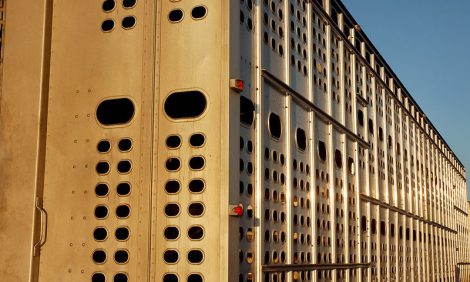



2012 - A Challenging Grazing Season Comes to an End
The AFBI review the grazing season as one of the most challenging growing seasons comes to an end.The impact of the weather on grazing conditions during the past summer and autumn has dominated discussions amongst grassland farmers across the country, with even the best grassland managers tested by the conditions. While the highs and lows of the grazing season have already been comprehensively documented within the weekly bulletins produced within the AgriSearch and DARD funded GrassCheck project, with grazing now complete on the majority of farms this is a good time to review what has been widely regarded as one of the most challenging grazing seasons in recent memory.

Rainfall
There is no doubt that the heavy and persistent rainfall throughout most of the middle and latter parts of the season was the key cause of many of the problems encountered in utilising grass during 2012. The extent of the rainfall is highlighted in Figure 1, which shows data collected from four of the six GrassCheck sites. Rainfall measured at all sites was well in excess of the long term average for the six month period from April to September, with the long term average based on records from AFBI-Crossnacreevy over a 20 year period. The sites in the west of Northern Ireland recorded the highest rainfall, with over 30% (6 inches) more rainfall recorded here compared to the long term average. In total over the six months from April to September, total rainfall measured at Fintona and Tempo was in excess of 26 inches, with 23 inches measured at Hillsborough.


Grass Growth
While spring 2012 is now just a distant memory, the growing season actually started off on a high, with mild weather in February and March, resulting in exceptional growth rates during early March. For example, grass growth recorded at Hillsborough and Greenmount during March was over twice the long term seasonal average. However, this period of above average growth was short lived, with growth rates falling below the long term average in early April at all sites (Figure 2). With the exception of a three week period of excellent growth in late May/early June when growth at the majority of sites was in excess of 90 kg dry matter per hectare per day, growth remained below average for most of the remainder of the year. The period of excellent growth in late May represented a later than normal peak to the seasonal growth curve.
Total Herbage Production
The highest yielding GrassCheck site during 2012 was Greenmount with 11.1 t dry matter per hectare harvested, while the lowest yielding site was Fintona with 8.2 t dry matter per hectare harvested. However, the average annual herbage production across the six GrassCheck sites was 9.6 t dry matter per hectare. This is over 1 t dry matter per hectare lower than the long term average annual production, and 1.6 t dry matter per hectare lower than the average annual production achieved at the same sites from the same fertiliser nitrogen input last year. Given the weather conditions and trends in growth already highlighted, this lower growth during 2012 is not surprising.
Preparations for Spring 2013
Whilst the full impact of the difficult conditions during 2012 will be felt well into the winter in terms of the quality and quantity of conserved forages available, it is important that the impact of 2012 is not allowed to derail the potential for grazing during 2013. Whilst autumn 2012 offered little opportunity to take remedial action on fields that were poached or compacted during the year, the performance of these fields must be monitored and action taken early in 2013 if need be. Furthermore, conditions experienced during 2012 highlight the importance of being able to adopt flexible management strategies during the grazing season. In situations where grazing options were limited this summer, improving laneways and drinking water access within the fields may provide the extra flexibility required to keep animals grazing for longer during 2013.
Ultimately grazed grass remains the cheapest feed available for the dairy, beef and sheep sectors in Northern Ireland. Despite the lower yields grown and utilised during 2012, improving the intake of high quality grazed grass should remain a key objective for 2013.
November 2012


